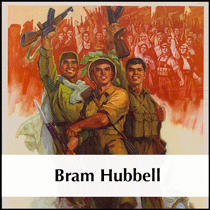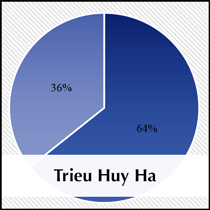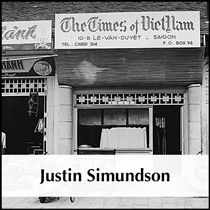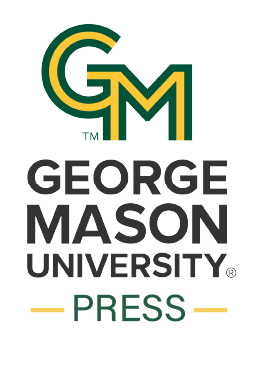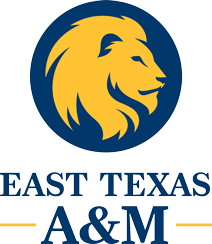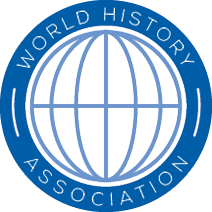Submissions
Submission Preparation Checklist
As part of the submission process, authors are required to check off their submission's compliance with all of the following items, and submissions may be returned to authors that do not adhere to these guidelines.- The submission has not been previously published, nor is it before another journal for consideration (or an explanation will be provided in comments to the Editor).
- The submission file is in Microsoft Word .doc or .docx format.
- Images are in .jpg (preferred) format.
- Where available, URLs (web links) for the references have been provided.
- The text is double-spaced; uses a 12-point font; employs italics, rather than underlining (except with URL addresses); and all illustrations, figures, and tables are placed within the text at the appropriate points, rather than at the end.
- The text has one-inch margins and subheads at the left-hand margins, with endnotes, and a short biographical statement of about 250 words, such as that appears on all published WHC articles.
- The submission includes a mailing address, email address, and phone number (WhatsApp number is also acceptable).
- The text adheres to the stylistic and bibliographic requirements outlined in the Submission Guidelines.
- Required Author Waiver: I declare that I am wholly responsible for the content of any submitted materials. I accept all responsibility for its content and also guarantee that all material contained within it is original, never before published, not plagiarized, and follows accepted standards for fair use.
Articles
Submissions Guide and Style Sheet for Articles: https://journals.gmu.edu/index.php/whc/libraryFiles/downloadPublic/6
World History Connected puts a premium on engaging writing. The journal wants articles that readers will enjoy enough to pass on to colleagues and to students. We want prose that is lively as well as informative. The journal’s peer reviewers are as adept at helping to enliven traditional academic journal writing (and chapters of theses and dissertations) as they are at encouraging professionalism in essays that may require it.
Traditional Research Articles
Any submission should address recent scholarship on world historical processes in play and/or why those interested in world history would find it of value. If a case study, the connection between it and parallel studies should be made clear. Introductory remarks should make explicit what it intends to illustrate/demonstrate and then revisit them in the conclusion. This is particularly important as among the almost two million readers of the journal are scholars whose first language is not English and such clarity will maximize their understanding of its intent. For an engaging example, see Laura J. Mitchell, “Illustrating Empire: A Soldier’s Life and Trans-imperial Encounters in the Eighteenth Century,” World History Connected 14, No. 1 (February 2017) at https://doi.org/10.13021/whc.v14i1.4053.
Such clarity of purpose may also attract the interest of busy scholar-teachers at any level of instruction who would also appreciate a reference to how they might make use of this scholarship as practitioners. Given one of the aims of the journal set out at the beginning of this style sheet—the need to connect those engaged in the research and teaching of world history—authors of traditional research articles are encouraged to provide in the introductory/closing sentences how that can be done or, alternatively, mention can be made in an Appendix or Appendices (easily inserted in any article) of active learning applications. This is by no means required. The first two articles in the Forum on Premodern History (World History Connected 17, No. 2: Summer 2020) were accepted without reference to classroom applications. However, when it was merely suggested that this connection would be welcome, these authors added both of these elements to their articles, thus fulfilling the World History Association’s dual mandate to advance both research and teaching in this field.
Scholarship of Teaching
The journal seeks articles that open with an introduction possessing the same clarity of intent expected of one based upon archival research noted above. All introductions should make explicit what it intends to illustrate/demonstrate and then revisits them in the conclusion. The connection between the article and parallel studies should be made clear before linking it to detailed descriptions of lessons and curricula. For example, if it advocates a new or a revision of an active learning activity, how does it fit within/relate to existing methodology or practice?
It should be noted that submissions from teachers new to publishing will be given every assistance to meet such requirements: literally scores of teachers have published their first article in this journal with the help of its peer reviewers and editors (we have four editors devoted to this process), all of whom are eager to help develop your talents.
Articles in this category often report on/assess innovative classroom strategies. The journal particularly values articles which offer samples of student work to further discussion of a lesson’s successes (and, yes, its limits) or to support claims about the way students learn history. We urge authors to discuss in some depth the way that particular ideas are translated into action in the classroom. A useful example of this is Rajeshwari Dutt’s article, “Art in the Teaching of World History in the STEM Classroom: India’s Institutes of Technology as a Case Study,” which was published in World History Connected 16, No. 3: Fall 2019 at https://doi.org/10.13021/whc.v16i3.3724.
Other subjects to consider—Curriculum and assessment: how can teachers design curriculum and assessment to integrate current scholarship with effective teaching prac-tice? Student learning and construction of knowledge: what can teachers do to improve student learning? Point of View: Teachers and scholars often differ on central questions of importance to world history education. Also, how can students best learn? How can classrooms most effectively deal with controversial issues?
To what extent should world history teachers welcome standardized exams? What is the ideal balance between teaching skills and teaching content?
Book Reviews
Book Review Guidelines: https://journals.gmu.edu/index.php/whc/libraryFiles/downloadPublic/7
Book review correspondence should be directed to the journal’s Book Review editor, Gina Bennett, at GBennett@coker.edu.
Works under review. Authors who are reviewing books should cite the work under review at the head of the review essay. Include the author’s name, the title, the place of publication and publication house, the date of publication, the number of pages, the price, and the binding, as in the following example: J. R. McNeill and William McNeill, The Human Web: A Bird’s Eye View of World History. New York: W. W. Norton, 2003. Pp. xviii + 350. $27.95 (cloth).
Copyright Notice
World History Connected, Inc. is the copyright holder to all content appearing in the journal. All content is intended for personal, noncommercial use only. You may not reproduce, publish, distribute, transmit, participate in the transfer or sale of, modify, create derivative works from, display, or in any way exploit the World History Connected database in whole or in part without the express written permission of the Editor of World History Connected.
Authors transfer all copyright ownership in and relating to the Work, in all forms and media, to World History Connected in the event that the Work is published.
Privacy Statement
The names and email addresses entered in this journal site will be used exclusively for the stated purposes of this journal and will not be made available for any other purpose or to any other party.


